
View of the upper part of Mystras, with the Acropolis on the right and the Despot's Palace on the left. (1120k)
From the Mystras entry in Wikipedia:
Mystras or Mistras, also known in the Chronicle of the Morea as Myzithras, is a fortified town and a former municipality in Laconia, Peloponnese, Greece. Situated on Mt. Taygetos, near ancient Sparta, it served as the capital of the Byzantine Despotate of the Morea in the 14th and 15th centuries, experiencing a period of prosperity and cultural flowering during the Palaeologan Renaissance, including the teachings of Gemistos Plethon. The city also attracted artists and architects of the highest quality. The site remained inhabited throughout the Ottoman period, when Western travelers mistook it for ancient Sparta. In the 1830s, it was abandoned and the new town of Sparti was built, approximately 8 km (5.0 miles) to the east.
In late 1248, William II of Villehardouin, ruler of the Frankish Principality of Achaea, captured Monemvasia, the last remaining Byzantine outpost on the Morea. This success was soon followed by the submission of the restive Tsakones on Mount Parnon, the Slavic Melingoi tribe of Mount Taygetos, and the inhabitants of the Mani peninsula, thereby extending his sway over all of Laconia and completing the conquest of the peninsula, which had begun in 1205, in the aftermath of the Fourth Crusade. Laconia was incorporated into the princely domain, and the young prince passed the winter of 1248–49 there, touring the country and selecting sites for new fortifications such as Grand Magne and Leuktron; finally, near his residence of Lacedaemon (ancient Sparta), on a spur of Mount Taygetos, he built the fortress that came to be known as Mystras.
In September 1259, William of Villehardouin was defeated and captured, along with many of his nobles, at the Battle of Pelagonia, by the forces of the Nicaean emperor Michael VIII Palaiologos. Two years later, the Nicaeans recaptured Constantinople, putting an end to the Latin Empire and restoring the Byzantine Empire. At this point, the emperor concluded an agreement with the captive prince: William and his men would be set free in exchange for an oath of fealty, and for the cession of Monemvasia, Grand Magne, and Mystras. The handover was effected in 1262, and henceforth Mystras was the seat of the governor of the Byzantine territories in the Morea. Initially this governor (kephale) was changed every year, but after 1308 they started being appointed for longer terms. Almost immediately on his return to the Morea, William of Villehardouin renounced his oath to the emperor, and warfare broke out between Byzantines and Franks. The first Byzantine attempts to subdue the Principality of Achaea were beaten back in the battles of Prinitsa and Makryplagi, but the Byzantines were firmly ensconced in Laconia. Warfare became endemic, and the Byzantines slowly pushed the Franks back. The insecurity engendered by the raids and counter-raids caused the inhabitants of Lacedaemon to abandon their exposed city and settle at Mystras, in a new town built under the shadow of the fortress.
While Mystras served as the provincial capital from this time, it became a royal capital in 1349 CE, when the first despot was appointed to rule over the Morea. The Byzantine Emperor John VI Kantakouzenos, reorganized the territory in 1349 to establish it as an appanage for his son, the Despot Manuel Kantakouzenos. From 1349 until its surrender to the Ottoman Turks on 31 May 1460, Mystras was the residence of a Despot who ruled over the Byzantine Morea, known as the "Despotate of the Morea". For the larger portion of his reign, Manuel maintained peaceful relations with his Latin neighbors and secured a long period of prosperity for the area. Greco-Latin cooperation included an alliance to contain the raids of the Ottoman Sultan Murad I into Morea in the 1360s. The rival Palaiologos dynasty seized the Morea after Manuel's death in 1380, with Theodore I Palaiologos becoming despot in 1383. Theodore ruled until 1407, consolidating Byzantine rule and coming to terms with his more powerful neighbors—particularly the expansionist Ottoman Empire, whose suzerainty he recognized.
This was the city's golden age; according to the Oxford Dictionary of Byzantium, Mystras "witnessed a remarkable cultural renaissance, including the teaching of Plethon, and attracted artists and architects of the highest quality"
Mystras was the last center of Byzantine learning and culture; the famous Neoplatonist philosopher Gemistos Plethon lived there until he died in 1452. While there, Plethon served as a tutor and advisor to the young despot Theodore II until his death in 1452. He and other scholars based in Mystras influenced the Italian Renaissance, especially after he accompanied the emperor John VIII Palaiologos to Florence in 1439.
The last Byzantine emperor, Constantine XI Palaiologos, was despot at Mystras before he came to the throne. Demetrios Palaiologos, the last despot of Morea, surrendered the city to Sultan Mehmed II in 30 May 1460. Under Ottoman rule it became part of the Sanjak of Mezistre. The Venetians occupied it from 1687 to 1715, but otherwise the Ottomans held it until 1821. The city joined the Orlov revolt in 1770. It was looted by Ottoman Albanians and the metropolitan bishop Ananias executed, despite having saved several Albanian lives in the uprising. A great number of local Greeks were also killed by the Albanian groups, while several children were sold into slavery. Mystras was left in ruins and this event was a significant factor leading up to its abandonment.
The Archaeological Site of Mystras is a UNESCO World Heritage Site.
All pictures are © Dr. Günther Eichhorn, unless otherwise noted.








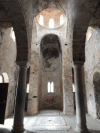

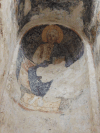


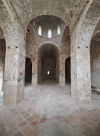
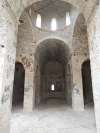
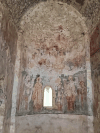









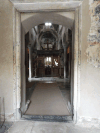
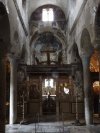


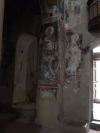





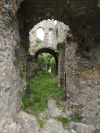







This page contains 43 pictures
Here are the links to the other main pages on Greece:
Page last updated on Fri Dec 2 11:59:19 2022 (Mountain Standard Time)
Page last updated on Sat May 18 20:57:50 2024 (Mountain Standard Time)